
TU/e opts for women: no more grey area
Social media, news shows, a pack of columnists and newspapers at home and abroad: everyone feverishly covered TU/e’s Irène Curie Fellowship last week. As of July 1, women will be given priority in the first six months when filling vacancies. Cursor asked for the opinions within the university. “It’s a good thing that the university sticks out its neck and doesn’t remain stuck in a grey area,” says one the interviewees.
After announcing the Irène Curie Fellowship-program on June 17, TU/e received over 12,500 messages via social media that demanded a response. Usually, the university receives about 2,000 messages a month, so these numbers alone clearly show the impact of the program and the intensity of the debate. The contrast between approval and disapproval is considerable and is marked by extremes on both sides. The discussion on the measure concerns a wide variety of aspects.
Rector Frank Baaijens still fully supports - even after all the commotion - the decision, which was prepared with the deans. He is not surprised, but he is disappointed by the intensity of some of the reactions. “You can expect this with every form of positive discrimination.”
Baaijens refers to a telephone conversation on the day of the announcement with a journalist who spoke casually and asked him “how he was going to deal with this hen house.” It just goes to show,” he says, “how much people’s thinking about women and this measure is sometimes characterized by prejudice and a lack of nuance. Women have had a 1-0 disadvantage at our university for many years, and we want to turn that situation around in a short period of time and give them a 1-0 advantage,” he says. Whether he deliberately chose this football analogy now that the woman’s world cup is held in France, is not clear. What Baaijens is aware of though, is that nearly everyone, men and women, suffers from gender bias when it comes to recruiting scientific personnel. And that the attempts made in the past to overcome this, did not have the desired effect.
The Executive Board now stipulates that at least half of all newly appointed university lecturers must be female. The minimum for associate professors and full professors is 35 percent. According to the board, the measure is in compliance with the European legislation, which allows an organization to recruit personnel among underrepresented groups.
Text continues under the infographic.
Male to female ratio at TU/e since 2016
(click on the infographic to enlarge it)
Cursor went around campus this week and asked several members of the university’s scientific staff what they think of the measure’s necessity, its fairness or unfairness, and how realistic they think the objectives set by the university are.
The importance and necessity of the measure
To rector Frank Baaijens, it is obvious: “More women on our scientific staff means better results from our research teams. In addition, we can’t afford to leave a large part of the intellectual potential in the Netherlands to remain untapped. That is why we will actively search for female talents during the next year and a half. This doesn’t mean that our doors will remain completely sealed for men, because the vacancy will be open to them as well after six months.”
When she first heard about the plans, full professor Elphi Nelissen said: “It’s a shame that we need it, but a good thing that we’re taking genuine action now. We didn’t get anywhere during the last ten years with soft measures. If you really want change, this is the way to do it.”
In a recent interview with Cursor on the occasion of her farewell as dean, Nelissen strongly criticized the culture at TU/e, which she considered to be male-dominated. Will this measure lead to change? She warns that it will take time. “Research shows that you need to have at least thirty percent women in an organization in order to bring about a culture change. For that reason, the target figures could have been higher as far as I’m concerned. And it’s also very important that those female scientists want to stay. I am afraid that women might quit prematurely, for instance when they come across competitive behavior in a group.”
Kees Storm, full professor at the department of Applied Physics, is a convinced supporter. “With its low percentage of women on its scientific staff, TU/e has been at the bottom of the ranking for years now. Lower than you would expect based on the intake statistics of girls in technical programs in the past. We have used several measures to try and increase that percentage – I have tried as well – but it didn’t work. Therefore, it’s a good thing to pay more attention to gender, and make it more compulsory.”
Like Nelissen, he points to the target figure of thirty percent women. “That is a fairly universal number. What is noteworthy in this regard is the 30% Club, which strives for that percentage when staffing the boards of major listed companies. So, that is where the tipping point lies.” When TU/e reaches that percentage, Storm expects that the mixed workforce will stabilize and sustain itself. “The influx process of female scientists will no longer need to be guided from that point on. We must not just focus on the influx though; we also need to make sure that the promotion of women to higher functions during the next five to ten years will be handled better and more honest. It has been proven that this process was obstructed, and we need to look at it critically as well.”
Dannie van Osch, postdoc at the department of Chemical Engineering, says that he is in favor of diversity, but he wonders why the university didn’t consider less drastic alternatives first. “Earlier this year, the Executive Board announced that a special recruitment team had been formed. Can’t this team specifically target female talents? That could have led to a balance with the candidates recommended by the team itself, one that probably would have included a lot of men.” Baaijens says the team is not equipped for that. “It is made up of four or five people and they do not have the broad network it takes to search for and recommend candidates. Their function is to support the search committees within the departments and to relieve them of some of their tasks.”
In recent years Daniël Lakens, assistant professor at the Human Technology Interaction group, has seen an increase in the number of female staff members at his department of Industrial Engineering & Innovation Sciences, as well as a change in the work climate. He can’t prove that one change led to the other. “When I started to work here ten years ago, it felt as if I had become a member of a men’s football team. The talk was often about football and we made some silly jokes and poked fun at each other. I associate that with a boys’ culture. It’s a bit more amiable now.”
If Lakens would have drawn up the measure himself, he would have opted for two groups. “You give female scientists priority when filling half of all vacancies, and you choose a woman in case of equal qualifications when filling the other half. That way, you have created a control group and you have more insight into the measure’s effectiveness.”
Marion Matters-Kammerer is one of three female fulltime full professors at the department of Electrical Engineering and is on the board of WISE, TU/e’s female network. “At WISE’s summer get-together last week, I noticed that there is a wide range of opinions on this measure, and that they are far apart sometimes as well,” she says. “One group of women believes it’s a positive step, others are angry about it. I just want to emphasize that WISE, as an organization, doesn’t have one opinion on the matter.”
Regina Luttge, associate professor at the department of Mechanical Engineering, is a member of the recruitment committee at her department and was therefore informed about the plan slightly in advance. “Procedures to get more women into scientific positions have been under way for so long now, in fact, it even makes me wonder: why did it take so long to introduce this measure?”
Luttge is proud that TU/e wants to make an “above-average commitment” and that it is “not afraid to break new ground” and to “stick its neck out to actually become an employer that values diversity.” She believes that it is better to stand for something and to commit yourself for one hundred percent, than to remain stuck in a grey area. Because the recruitment procedures have proven to be downright unsuccessful in creating a significant increase in the number of women so far, she says.
Dan Jing Wu, PhD candidate at the department of Biomedical Engineering, says that TU/e took a brave decision by implementing this measure, even though she doesn’t quite agree. “I see it as a scientific experiment. Evidently, TU/e attempted to attract more women in several different ways and nothing works, so you try out a drastic measure. If it doesn’t work it will be over in a year and a half, but at least they tried. I do believe that it is difficult to drastically change these kinds of deeply ingrained behavioral patterns just like that; it takes time.”
How realistic are the objectives?
Boudewijn van Dongen, full professor at the department of Computer Science & Engineering, wrote a column last week in which he presented statistics from the Rathenau Institute and Statistics Netherlands about the age at which scientists start to occupy certain positions, and about past intake numbers of girls in his field. On that basis, he concluded that it was unrealistic to expect high percentages of assistant professors, associate professors and full professors for certain positions at this point. During a recent recruitment campaign at Computer Science & Engineering, Van Dongen says, only ten percent of the candidates were women. Conclusion: there simply aren’t any qualified candidates.
When asked whether the solution can be found abroad, Van Dongen replies: “That only applies to those fields that are ranked among the top in the world. That certainly does not apply to every field. Perhaps the dean focusses to narrowly on his own field, Biomedical Engineering, which does rank among the world’s best, making it easier to find female candidates.” Baaijens acknowledges that it will be easier for certain fields, “but it certainly isn’t impossible for the others. We will support the search committees in that, and we will also try to gain information abroad. And yes, that will take longer.”
Rector Frank Baaijens acknowledges that it will be easier for certain fields, “but it certainly isn’t impossible for the others. We will support the search committees in that, and we will also try to gain information abroad. And yes, that will take longer. I can well imagine that we will continue with the measure after the first year and a half, but with a specific focus on certain domains.”
Regina Luttge, associate professor at Mechanical Engineering, says she has no problem with TU/e taking more time, “and six months might perhaps not even be long enough.” She believes that it will also give the university more time to take a closer look at the vacancy texts for instance, and the criteria matrixes on the basis of which candidates are assessed.
She doubts whether the new measure will result in the desired percentages at TU/e. “There will certainly be successes, but I don’t think we can assume that the measure will have the impact within a year we would like it to have. But I do expect a broader and more informed debate about this issue – between employees among themselves, between the Executive Board and employees, but also between TU/e and the outside world. We should also approach this discussion from a more emotional perspective: how do we feel about this gender bias, why do we feel kind of restricted and uneasy? Because that bias is a fact: why don’t we accept it as such, so that we can adopt concrete measures?
Full professor Vincent Müller, who was recently appointed as chairholder in the Ethics and Technology group, believes that the continuing process of internationalization at TU/e can also have a positive effect. Müller: “I came here because there are quite a lot of international scientists in this group already, and it wouldn’t feel right to be to odd one out. That is what will happen with women as well, including those from abroad; I’m sure that they will come to TU/e once they are convinced that they are welcome here. This measure gives them that certainty.”
Former dean Elphi Nelissen expects that it will be possible, for Built Environment in any case, to find enough qualified women. “We have to search for them among the group of women who took their PhD’s about twenty years ago. That talent pool is much larger now, and that offers possibilities. Men – just like women by the way – look for a copy of themselves when they recruit someone, and having more women on committees will hopefully bring about change.”
Put more women on advisory appointment committees (the so-called BAC’s) is the urgent advise from Marion Matters-Kammerer. “According to the statistics I myself, as a female full professor, most often have a seat in appointment committees. This is a result of an earlier measure by TU/e to get more women appointed. But female candidates are hardly ever up for consideration. What you see is that the BAC members look for candidates in their personal network and in the group’s network, and this usually means that the committee only has a choice between male candidates. Highly qualified men always, by the way.”
The new measure forces departments to look beyond their familiar frameworks. Because much is still decided behind closed doors today
That is the most important “gain” of the new measure, according to her. “It forces departments to look beyond their familiar frameworks. Because much is still decided behind closed doors today.” She too believes that the search for female candidates will be more difficult within those fields where the influx of women was still low in the past
Full professor Kees Storm recognizes the problem with the BAC’s. “Very understandable on a micro-scale, because you discuss a vacancy that needs to be filled with each other, you consider people you know already, and you don’t want to burden the BAC with extra search time, because they are busy enough as it is.”
He has no doubts that there are enough qualified female candidates. “Of course there are, and we don’t have to immediately start looking for them abroad. They can be found here in the region and in the rest of the country. However, we see that very few of them apply for a job. Most of them pass up the chance from the start, possibly because they expect that the work climate for women at TU/e won’t suit them optimally.”
PhD candidate Janna Behnke, who does research on gender bias under supervision of Chief Diversity Officer Evangelia Demerouti, also believes that it is important to create a work environment “in which female scientists feel welcome because of the unique person they are. That is why TU/e finances my promotion project in which we develop and conduct research on ways in which people in leading positions and staff members can relate to each other in an inclusive manner.”
Daniël Lakens thinks that TU/e still doesn’t exactly know why women apply for a job less often than men. “Ask female scientists and create a more attractive climate on the basis of those insights.”
According to rector Frank Baaijens, the mentoring program for young scientists will play a role in this. “We are further developing that program on a central level both for men and women. The program was set up to help our young scientists find their way in the early stage of their careers.”
PhD candidate Dan Jing Wu says she would not apply to such a vacancy, “because it would give me the idea that I wasn’t chosen on the basis of my qualities. I want to enter into a competition for a job, with men and women.” She doesn’t expect to continue her career in academia though. “I don’t feel like living in uncertainty because you have to apply for funding over and over. There is so much competition within the academic community.”
Proactive preliminary work at AP and CE&C
According to full professor Kees Storm, the board of the department of Applied Physics has been calling for a more proactive role when it comes to recruiting women since 2012, and he believes the group leaders have successfully taken up that challenge. “The net result is that fourteen excellent tenure-trackers were appointed during the last seven years: seven men and seven women.”
The department of Chemical Engineering & Chemistry has pursued a proactive policy on this issue for some time now, says dean Emiel Hensen: “Besides making sure that we had a sharper eye for the development within our university of talented women and men, which led to a higher number of female professors, we opened up three vacancies in 2017 for which the search committee specifically looked for female talents that were in tune with broad lines of research. We eventually managed to fill two of these vacancies that were open to women. The other vacancy was filled by a man.”
How fair is the measure?
Roy van den Heuvel, PhD candidate at the department of Industrial Design, doesn’t feel discriminated against by the measure, but he does have some reservations. “Essentially, I welcome the initiative to hire more women, I think it will have a positive impact on diversity and creativity, but a drastic measure such as this one is somewhat questionable.”
Van den Heuvel is especially curious about the data. “What exactly were the trends during the last years regarding the number of candidates and the hiring percentages, and how do they correspond with the measures that were taken earlier? I can’t find those numbers in the university’s annual report, or anywhere else. So, I can’t substantiate why this measure was necessary.”
It will not be a direct problem for TU/e’s own PhD students, according to full professor Marion Matters-Kammerer. “They will not move on to the position of assistant professor directly after obtaining their PhD, because that is preceded by a period of several years as postdoc. For the latter group it might be a problem, I think. You could consider that a negative side effect.”
Postdoc Dannie van Osch would like to continue his academic career at TU/e, but that path seems to be blocked now. He fears that he will be forced to leave once his current contract expires. He has stated in several tweets that he devoted himself to TU/e, where he graduated and took his PhD, throughout his entire scientific life. “Now it seems that I will be punished for that, and I’m sure others feel the same way.”
He doesn’t worry too much though. “I expect to find employment elsewhere and I officially work for startup Vertoro one day a week, and four days a week at TU/e as postdoc. Staying on at Vertoro could also be an option.”
Kees Storm is happy with the internal discussion caused by the measure. “That discussion includes the opinions of women who oppose the measure because they want to earn their position themselves. A valid point, but not all women feel that way. I also hear the criticism of men who say that this has blocks the path to their future career. By abandoning the permanent staff position principle, TU/e no longer has a fixed number of people on a job level, and this means that career steps of a colleague, even in your direct environment, do not change your own possibilities.”
Within a few months, Daniël Lakens will become an assistant professor, it’s simply a matter of filling out the paperwork. “The question then is whether I will become a professor. It wouldn’t bother me for a moment if a woman were to get the position instead of me as a result of this preferential treatment. At least not if the objectives that are pursued with this measure are substantiated with sound scientific data. I’m not working here for a title, nor am I motivated by a higher salary and prestige.”
Regine Luttge ignores the critical comments expressed by many people last week. If only because many comments, she believes, came “from a gut feeling,” expressed by people who hadn’t seriously studied the matter. “If you have any idea of the situation and what has happened during the last decades, you would really have to embrace this measure.”
She speaks of ‘widening the net.’ “To me, the principal idea behind the measure is to keep a vacancy open for a long period of time before you fill it, so that you have enough time to find the best candidates. Current academic networks are mostly dominated by men, women are often less visible at first – probably because their career path is often less traditional.”
How successful are Groningen and Delft?
The University of Groningen started with the Rosalind Franklin Fellowships as far back as 2002 and TU Delft introduced the Delft Technology Fellowships in 2012. Rector Frank Baaijens says that they serve as an example for TU/e’s Irène Curie Fellowships. But exactly how successful are they?
In 2002, the University of Groningen started the Rosalind Franklin Fellowship program at one of its departments - Science & Engineering - to improve the gender equality in top scientific positions. The program was implemented university-wide in 2007. “Unlike the TU/e program, our program is about additional positions that are open exclusively to female candidates,” says Frank Nienhuis, HR adviser at the University of Groningen. “That means that the position cannot be filled by a man in case we can’t find a female candidate. It doesn’t apply to regular vacancies. We invite female candidates to submit a research or education proposal. Obviously, this has to correspond with our university’s research and education themes so that we can offer the female candidates a position for the longer term.”
The program is a great success according to Nienhuis. “By now, thirty percent of our female professors have successfully moved on to the position of full professor, and many of our fellows have moved on to the position of associate professor. Our target figure for female professors is 25 percent, and currently the number is 21.6. The percentage of female associate professors is almost 36 and has been rising for seven years in a row, partly as a result of the RFF program.”
The basis of a good conversation
Since 2002, over a hundred fellows started at the University of Groningen and the University Medical Center Groningen, and 84 of them are still employed there. A necessary program, Nienhuis says, “because the balance between men and women in scientific positions doesn’t correct itself automatically.” In the early years, people asked many questions about the purpose, reason and necessity, Nienhuis says. “Measures such as the one implemented by TU/e and by us with our program at the time cause resistance, but they are also the basis of a good conversation. Obviously, we need to invest in that.” He says that there is extra attention for introducing and embedding fellows.
Program in Delft
TU Delft will start with its Delft Technology Fellows program, which was also set up with the specific purpose of recruiting women, for the fifth time in the fall of this year. TU Delft spokeswomen Karen Collet said, when asked by news site Delta, that the program is not as far-reaching as TU/e’s program, but that it will be implemented once a year from now on instead of once every two years. Collet: “In addition, TU Delft is now actively approaching women to apply to vacancies, we use the networks DEWIS (Delft Women in Science) and the Dutch Network of Women Professors for this.” She says that jobs of possible partners, childcare and schools are also taken into consideration.
“At this point, four successful recruitment rounds have taken place,” says Caro Coemans, HR advisor at TU Delft, "during which ten Fellowships were awarded in each round. Each recruitement round attracted an overwhelming number of responses from highly qualifed people, between 300 and 400,"

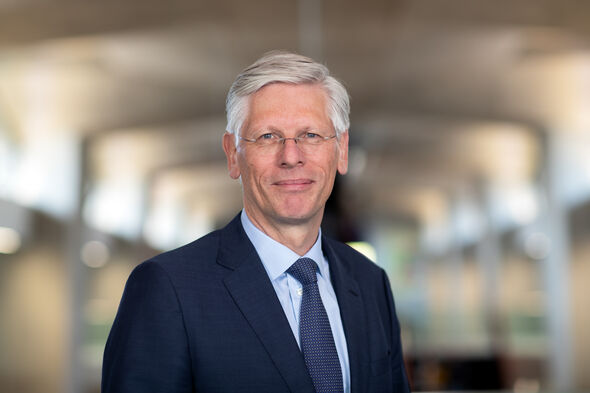
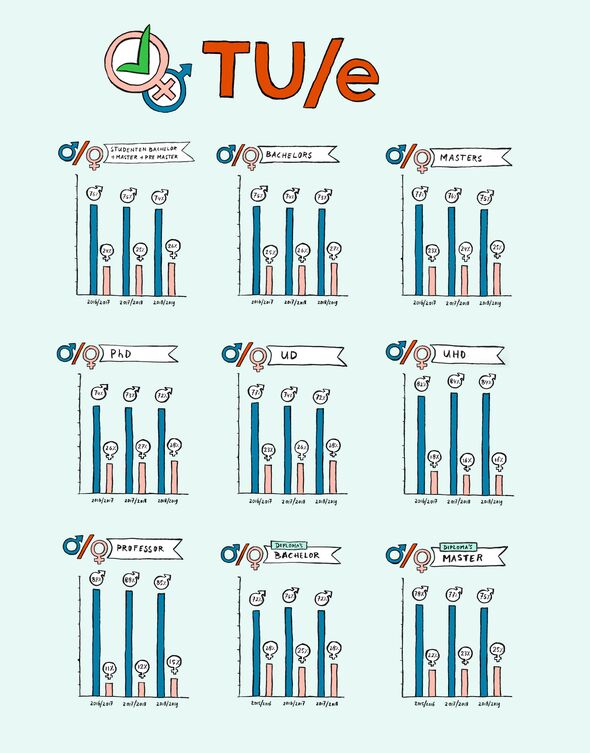
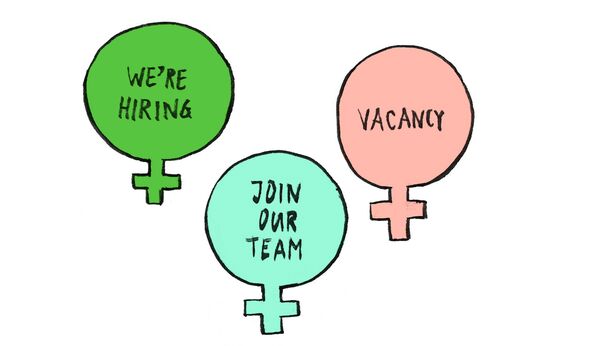
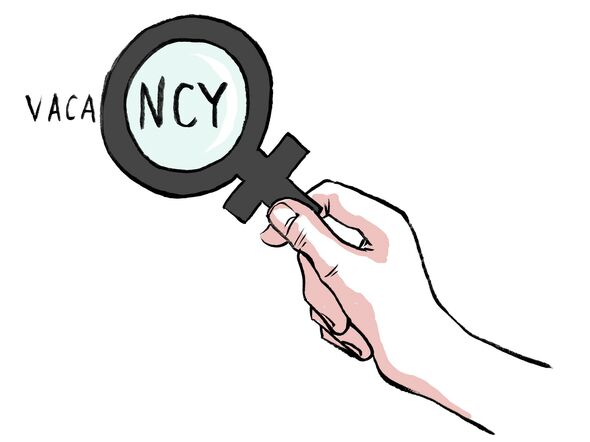
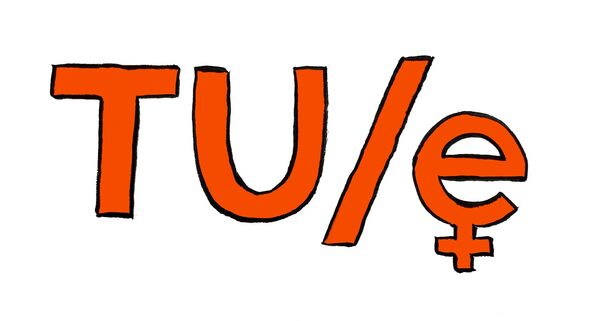

Discussion